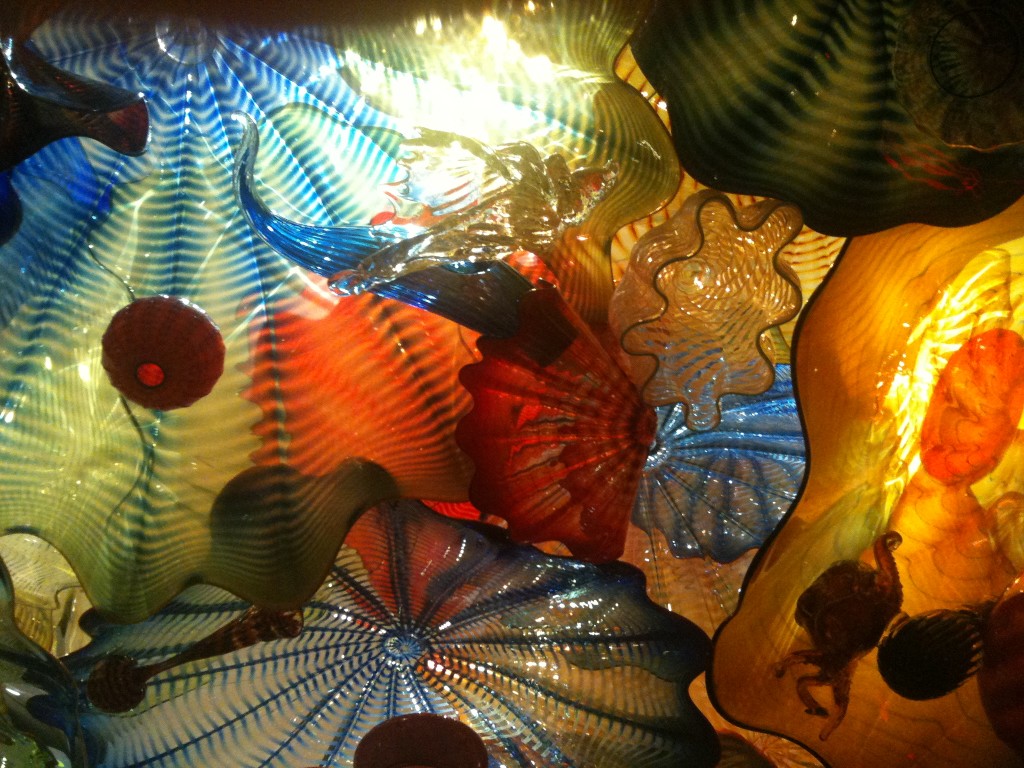This past weekend I took a road trip to Richmond, VA and was thrilled to be introduced to the ethereal artistry of the glassworks created by Dale Chihuly at the Virginia Museum of Fine Arts. In particular from this exhibit, the piece ‘Persian Ceiling‘ is an experience I wanted to share. As I gazed up into the illuminated glass ceiling with the gleaming and luminescent art densely piled up (practically to the sky!), I was certain I had been transformed to another point in time.
It was as if I was witness to the Great Barrier Reef at its apex in species diversity and brilliance of color. I wondered how he created such movement in still objects – spectacular! No doubt I was head-over-heels impressed due to the beautiful daylight that was paired with the exhibit space. I also found it incredibly playful how Chiluly interspersed echinoderms, mollusks, and cephalopods to give the illusion that you’re indeed walking under the sea (see if you can spot them in the images below). If you have the opportunity, you cannot go wrong with investigating the work of Chihuly. If you’re lucky enough to see his work first hand, it will surely brighten your day and have your feeling inspired.
Images (c) Beach Chair Scientist












What people are saying …